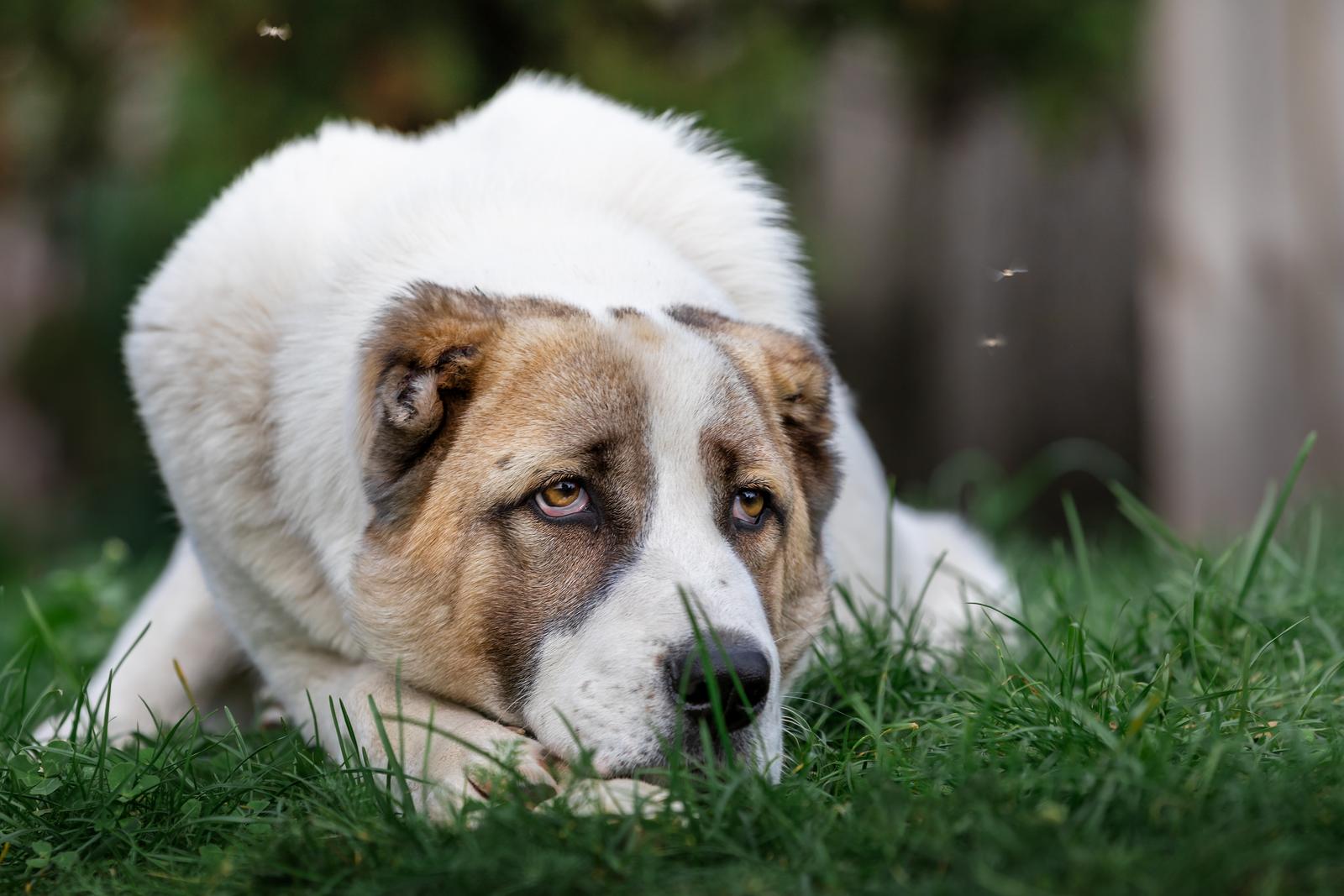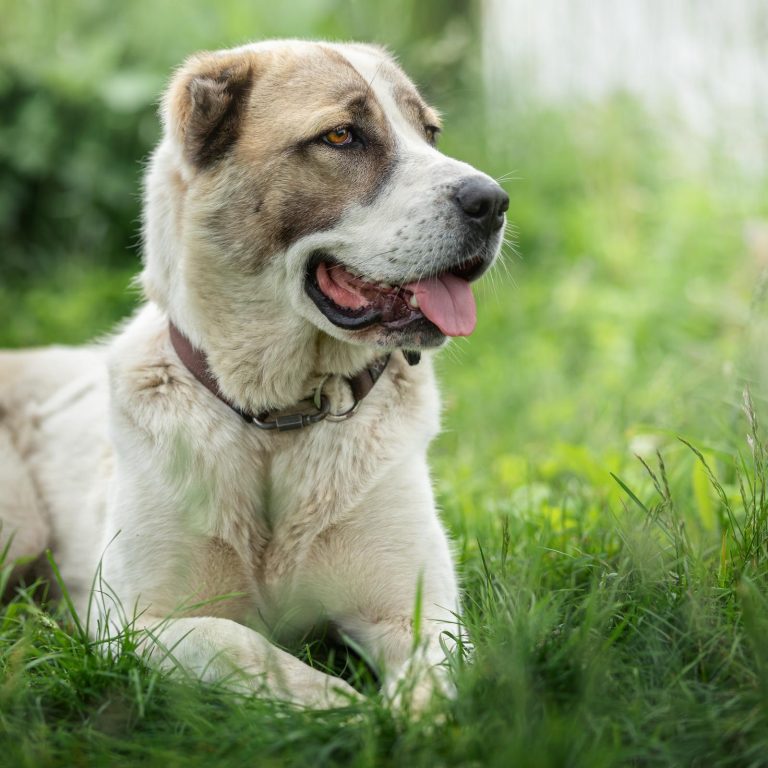The Central Asian Shepherd and Caucasian Shepherd have ancient origins as livestock guardians. Both breeds developed in harsh climates, shaping their protective instincts and robust physiques. Let’s take a closer look at the similarities and differences between these two dog breeds.
If you’re still on the market to buy a Central Asian Shepherd or Caucasian Shepherd, PuppySpot currently offers a $300 discount using the code PUPPY300, just click the banner below!
Physical Characteristics and Size
Central Asian Shepherds and Caucasian Shepherds are large, powerful dogs with thick double coats. They differ in their exact proportions and appearance details.
Appearance Comparison
Central Asian Shepherds have a more rectangular body shape. Their heads are large and broad with a slightly domed skull. They have small, dark eyes and high-set ears that may be cropped in some countries. Their thick coats come in various colors including fawn, brindle, and black.
Caucasian Shepherds have a more massive, bear-like build. Their heads are very large with a broad muzzle. They have small ears set high on the head. Their dense double coat is longer than the Central Asian’s, especially around the neck. Common colors are gray, fawn, and pied. Both breeds have thick fur that sheds heavily, especially during seasonal changes. Regular brushing is needed to manage shedding.
Size Metrics
- Central Asian Shepherds are slightly smaller on average. Males stand 25-28 inches tall and weigh 110-170 pounds. Females are 24-27 inches tall and 88-110 pounds.
- Caucasian Shepherds are larger. Males reach 27-30 inches in height and can weigh up to 170-220 pounds. Females stand 25-28 inches and weigh 99-180 pounds.
- A key difference is that Caucasian Shepherds often outweigh Central Asians by 50 kg / 110 pounds or more. This extra bulk gives them a more imposing presence.

Temperament and Personality
Central Asian Shepherds and Caucasian Shepherds have strong, protective personalities. These large breeds share some traits but differ in key ways that affect their suitability as pets or working dogs.
Behavioral Traits
- Central Asian Shepherds are independent and territorial. They tend to be calm and reserved around strangers. These dogs need a lot of space and don’t do well in small homes.
- Caucasian Shepherds are also independent but can be more stubborn. They bond closely with their families but may be wary of outsiders. Both breeds are intelligent and need mental stimulation.
- Neither breed is ideal for first-time dog owners. They require confident, experienced handlers who can provide firm, consistent training from an early age.
Protective Instincts
- Both breeds have very strong guarding instincts. They were bred to protect livestock from predators like wolves.
- Central Asian Shepherds are alert and vigilant. They watch their surroundings carefully and react quickly to perceived threats.
- Caucasian Shepherds are extremely protective of their families and property. They may be more likely to act aggressively towards strangers without proper socialization.
- These dogs make excellent guard dogs but need extensive training to differentiate between real threats and normal situations.
Aggression and Training
- Both breeds can show aggression if not properly trained and socialized. Early and ongoing training is crucial.
- Central Asian Shepherds may be slightly easier to train. They tend to be less stubborn than Caucasian Shepherds.
- Caucasian Shepherds need very firm, consistent training. They can be willful and may try to dominate inexperienced owners.
- Positive reinforcement works best for both breeds. Harsh methods can increase aggression. Socialization with people and other animals from puppyhood is essential to prevent problem behaviors.
Health and Longevity
Central Asian Shepherds and Caucasian Shepherds are generally hardy breeds. Both face some health risks common to large dogs. Their lifespans and specific health concerns differ slightly.
Life Expectancy
- Central Asian Shepherds typically live 10-12 years. Caucasian Shepherds have a similar lifespan of 10-12 years.
- Both breeds can reach their early teens with proper care. Good nutrition, exercise, and regular vet check-ups help extend their lives.
- Large breeds often age faster than smaller dogs. Giant breeds like these may be considered seniors by age 6-7.
Common Health Concerns
Hip dysplasia affects both breeds. This joint condition can cause pain and mobility issues.
Central Asian Shepherd Dogs may develop:
- Elbow dysplasia
- Bloat
- Eye problems
Caucasian Shepherd Dogs are prone to:
- Heart issues
- Obesity
- Joint problems
Both breeds can suffer from allergies and skin conditions. Regular grooming helps spot skin issues early. Obesity is a risk for these large dogs. Proper diet and exercise are key to maintaining a healthy weight.
Grooming and Care
Central Asian Shepherds and Caucasian Shepherds have thick double coats that require regular maintenance. These large breeds also need proper exercise to stay healthy and happy.
Coat Maintenance
- Both breeds have dense, weather-resistant double coats that shed heavily. The Central Asian Shepherd has a shorter coat that’s easier to maintain. Brush it 2-3 times a week to remove loose hair and prevent matting.
- Caucasian Shepherds have longer, thicker coats that need more attention. Brush them 3-4 times weekly, focusing on areas prone to tangling like behind the ears and legs. During shedding seasons, daily brushing may be necessary for both breeds.
- Bathe these dogs every 2-3 months or when dirty. Use dog-specific shampoos to protect their skin’s natural oils. Trim nails regularly and clean ears weekly to prevent infections.
Exercise Requirements
- Central Asian and Caucasian Shepherds need moderate exercise despite their large size. Daily walks of 30-60 minutes are sufficient for both breeds. They enjoy patrolling their territory, which can count as exercise.
- Provide mental stimulation through obedience training or puzzle toys. These independent breeds may not always follow commands, so start training early.
- Avoid intense exercise in hot weather due to their thick coats. Swimming can be a good option for cooling off. Always ensure they have access to fresh water, especially after exercise.

Trainability and Social Behavior
Central Asian Shepherds and Caucasian Shepherds have distinct traits that affect their training and social skills. These large breeds need proper socialization and consistent training from an early age.
Obedience and Intelligence
- Both breeds are intelligent but can be stubborn. Central Asian Shepherds tend to be more independent and may challenge their owners. They need a firm, experienced hand in training.
- Caucasian Shepherds are also strong-willed but can be more responsive to commands. Early obedience training is crucial for both breeds to ensure they follow directions as adults.
- Positive reinforcement works best for these dogs. Harsh methods can lead to aggression or fear. Consistency and patience are key in training sessions.
- Both breeds excel in tasks that align with their guardian instincts. They can learn to patrol property boundaries and respond to specific threats.
Interactions With Children and Other Animals
- Proper socialization is vital for these large, protective breeds. When raised with children, they can be gentle giants. However, their size and strength require supervision around small kids.
- Caucasian Shepherds and Central Asian Shepherds may be wary of strangers and other animals. Early exposure to different people and pets helps reduce aggression.
- These dogs often get along with family pets they grow up with. However, they may show dominance or aggression towards unfamiliar animals.
- Both breeds have strong territorial instincts. This can lead to conflicts with other dogs, especially of the same sex. Careful introductions and constant supervision are necessary when introducing new animals.




